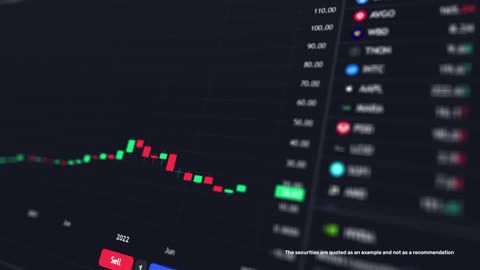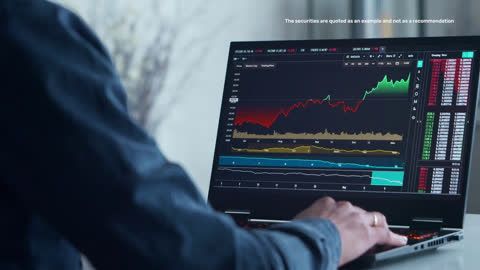Listed below are the major types of trading strategies prevalent in the market.
1. Day trading
Day trading involves buying and selling stocks within the same trading day, typically between 9:15 AM and 3:30 PM on weekdays, excluding market holidays. Traders engaged in day trading hold stocks for only a few minutes or hours and must close their positions before the market closes. This approach is popular for taking advantage of minor price fluctuations throughout the day. However, it requires in-depth market knowledge, an understanding of volatility, and quick decision-making skills, making it more suitable for experienced traders.
2. Swing trading
In swing trading, a trader usually purchases a stock and holds it for several days or a week to capitalise on the short-term stock patterns & trends. These traders must have adequate knowledge of stock trends and patterns to execute their trades successfully.
3. Scalping or micro trading
Also known as micro-trading, scalping is a subset of intraday trading that focuses on making numerous small profits from rapid trades. Traders buy and sell stocks within a very short timeframe, sometimes within minutes, executing dozens or even hundreds of trades in a single day. While the potential for small profits is high, losses can sometimes surpass gains. Scalping demands a keen understanding of market trends, experience, and quick execution of trades.
4. Momentum trading
Momentum trading focuses on capitalising on significant price movements, either upwards or downwards. Traders look for stocks that are breaking out or expected to experience a sharp price shift. In an upward momentum scenario, traders sell their holdings at a higher price, while in a downward trend, they purchase stocks to sell later at a higher value. This strategy relies on market timing and trend analysis to maximise returns.
5. Position trading
Position trading is a long-term trading strategy that involves buying an investment with the expectation that it will appreciate over time. Position traders are less concerned with short-term fluctuations in price and news of the day unless they alter the trader’s long-term view of the position. They hold their positions for an extended period, typically weeks, or months, to achieve profit from the price movements of an asset.
How does trading work?
Stock trading in India is the buying and selling of shares of a listed entity in one of the leading stock exchanges like the National Stock Exchange (NSE) and Bombay Stock Exchange (BSE).
The capital market in India consists of two major segments: primary market and secondary market. On the primary market, private companies (who became public )can issue securities directly to the public to raise funds through a public offering. These are of two types: Initial Public Offering (IPO) and Follow-on Public Offering (FPO).
Once the IPO is completed, all shares of a company are listed in the secondary market, where investors can freely buy and sell stocks and other securities. In India, people are required to open a Demat and trading account with a stockbroker to hold and trade shares.
Whenever there is a purchase request with the broker, it gets passed on to the respective stock exchange. Here, the exchange matches a buy order with an equivalent quantity of a sell order of the same stock. Following this, a transaction takes place where cash and securities are exchanged.
Current impact of online trading
The advent of online trading has significantly reshaped the financial sector, providing individual investors with unparalleled access to global markets. It has empowered retail traders by offering cost-effective solutions, instant market updates, and greater flexibility in trade execution.
Furthermore, online trading has facilitated the rise of automated investment tools such as robo-advisors, broadened the range of available financial instruments, and spurred technological advancements within the industry. However, this digital evolution also brings challenges, including regulatory complexities, increased market volatility in certain assets, and cybersecurity threats. As a result, traders must approach online trading with caution and adaptability to navigate potential risks effectively.
With continuous technological progress, online trading is set to play an even more significant role in shaping the future of the financial landscape.
What assets and markets can you trade?
You can trade a wide variety of financial assets and markets which include:
- Shares: Trading in individual company stocks, allowing you to buy and sell ownership stakes in specific businesses.
- Indices: These are indicators that represent a basket of stocks or assets, allowing you to predict the overall performance of a group of companies or markets.
- Forex: The foreign exchange market, where you can trade currency pairs, taking a chance on the relative strength or weakness of one currency against another.
- ETFs (Exchange-traded funds): These are investment funds that hold a collection of assets like stocks, bonds, or commodities. Trading ETFs allows you to gain exposure to a diversified portfolio.
- Bonds: You can trade bonds, which are debt securities issued by governments, municipalities, or corporations, providing fixed income in the form of periodic interest payments.
- Commodities: Trading in raw materials and primary agricultural products, including precious metals, energy resources, and agricultural goods.
- IPOs (Initial public offerings): Participating in the initial issuance of shares by a company when it goes public, potentially gaining from the stock's early price movements.
While there are various instruments to trade, it's essential to recognise that trading carries inherent risks. The primary goal is to make a profit on the basis of market's movements. However, it's crucial to exercise risk management to avoid unexpected losses, as trading can be volatile and unpredictable.
Difference between trading and investing
Trading and investing represent two distinct approaches with different objectives, time frames, strategies, and risk attitudes.and Investing
Aspect
|
Investing
|
Trading
|
Purpose
|
Builds wealth over the long term
|
Generates profits from short-term market movements
|
Time frame
|
Long-term (years to decades)
|
Short-term (minutes to weeks)
|
Focus
|
Capital growth and income
|
Capital gains from price fluctuations
|
Risk
|
Lower, due to longer time horizons
|
Higher, often increased by leverage
|
Analysis type
|
Fundamental analysis
|
Technical analysis
|
Emotional stress
|
Less frequent monitoring needed
|
Requires constant vigilance and quick decisions
|
Who trades and who invests?
Traders and investors play distinct roles in financial markets, each with unique objectives and strategies.
Traders engage in short-term buying and selling of financial instruments, aiming to profit from short-term price fluctuations. They typically rely on technical analysis, market trends, and volatility to make rapid decisions. Traders often have a high-frequency trading approach, seeking to capitalise on market inefficiencies and momentum. Their primary goal is to generate profits quickly, often within minutes, hours, or days.
On the other hand, investors take a long-term perspective, seeking to build wealth over time through the appreciation of assets. They focus on fundamental analysis, examining the financial health and growth prospects of companies or assets. Investors aim to create wealth through capital appreciation, dividends, or interest income. They are generally less concerned with short-term market fluctuations and instead focus on the long-term growth potential of their investments.
In summary, traders seek short-term gains by actively buying and selling securities, while investors take a long-term approach, aiming to build wealth over time through strategic investment decisions.
What are the advantages of trading?
Trading stocks and other securities offer several benefits that make it an attractive option for investors:
- Profit potential: Trading provides the opportunity to achieve significant profits within a relatively short time frame. When executed with the right strategy at the right time, traders can capitalise on market movements to generate substantial returns on their investments.
- Flexible in nature: Trading is inherently flexible. Traders have the freedom to buy and sell securities as and when it seems appropriate. This flexibility allows investors to adapt to changing market conditions and capitalise on opportunities.
- Access to a growing economy: Active participation in trading, especially in sizeable trades, provides traders with direct exposure to the economic growth of the country. When a market index increases in value, it signifies the economic expansion of the nation. Therefore, professional traders can benefit from the growing economy by strategically investing in assets influenced by this growth.
- Take advantage of economic growth: Trading allows investors to leverage economic growth. A growing economy often translates to increased corporate earnings due to job creation, higher income levels, and increased consumer spending. Investors can capitalise on this by investing in businesses poised for growth in response to economic expansion.
- Easy buying and selling: The process of buying and selling shares in the stock market is straightforward and accessible to all investors. It begins with opening a Demat account, which can be done through a broker, financial planner, or online mode. Setting up an account is a quick process, taking about 15 minutes, and allows investors to initiate their investment journey. Once the account is established, investors can conveniently place buy and sell orders to engage in trading activities.
- Flexibility for small investments: Even new investors can start with a relatively small amount by purchasing stocks of small-cap or mid-cap companies in smaller units. This accessibility is ideal for those who want to test the waters of trading with limited capital.
- Liquidity: Stocks are considered highly liquid assets. They can be readily converted into cash at any time, offering a level of liquidity that is often superior to other financial assets. Investors can easily sell their stocks when needed, making it a convenient choice for those who require quick access to their investment funds.
Online trading vs offline trading
Here is a comparison between online trading and offline trading in India:
- Convenience: In the online mode, one can trade from almost every part of the world. While in an offline mode, a trader will have to visit a broker's office in person or call your broker for trading.
- Ease of trading: In online trading, one can make decisions freely without any intervention from any external source. However, with offline trading, all transactional activities are carried out by the broker.
- Quality advice: Online trading provides access to detailed reports with charts, patterns and trend recommendations.
Conclusion
The practice of trading in India is growing at an exponential pace as evidenced by the growth of Demat and trading accounts with various stockbrokers. Hopefully, this article has served the purpose well for those who are looking forward to starting trading on the stock market.
Related articles




